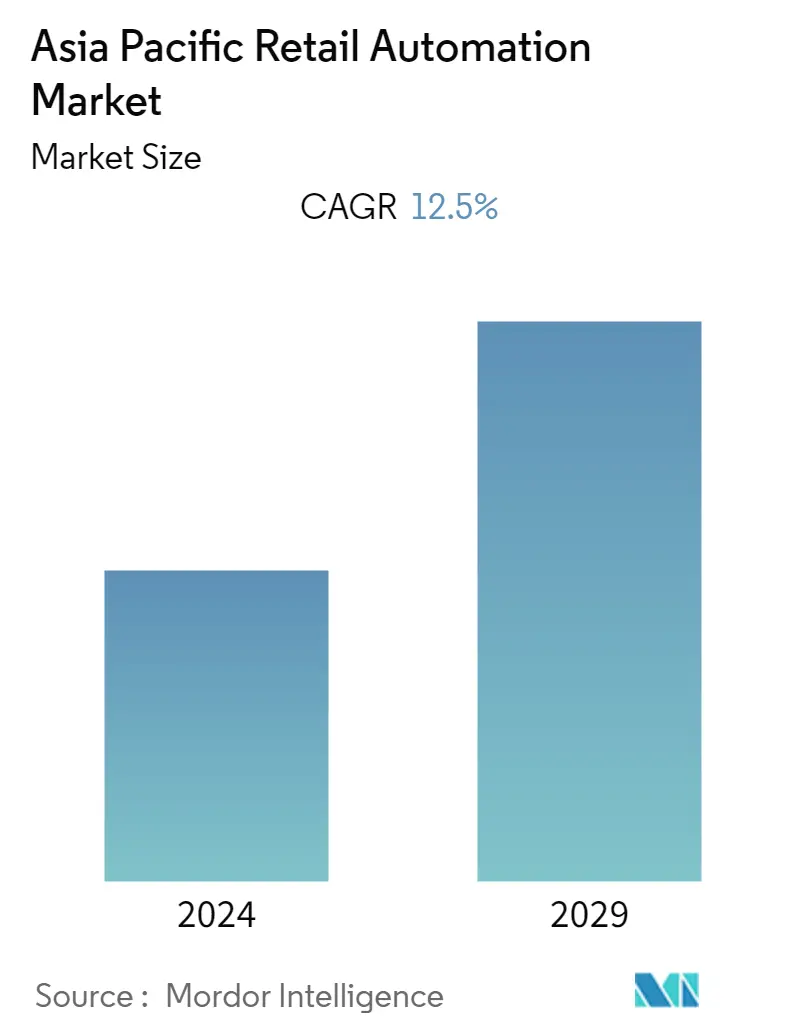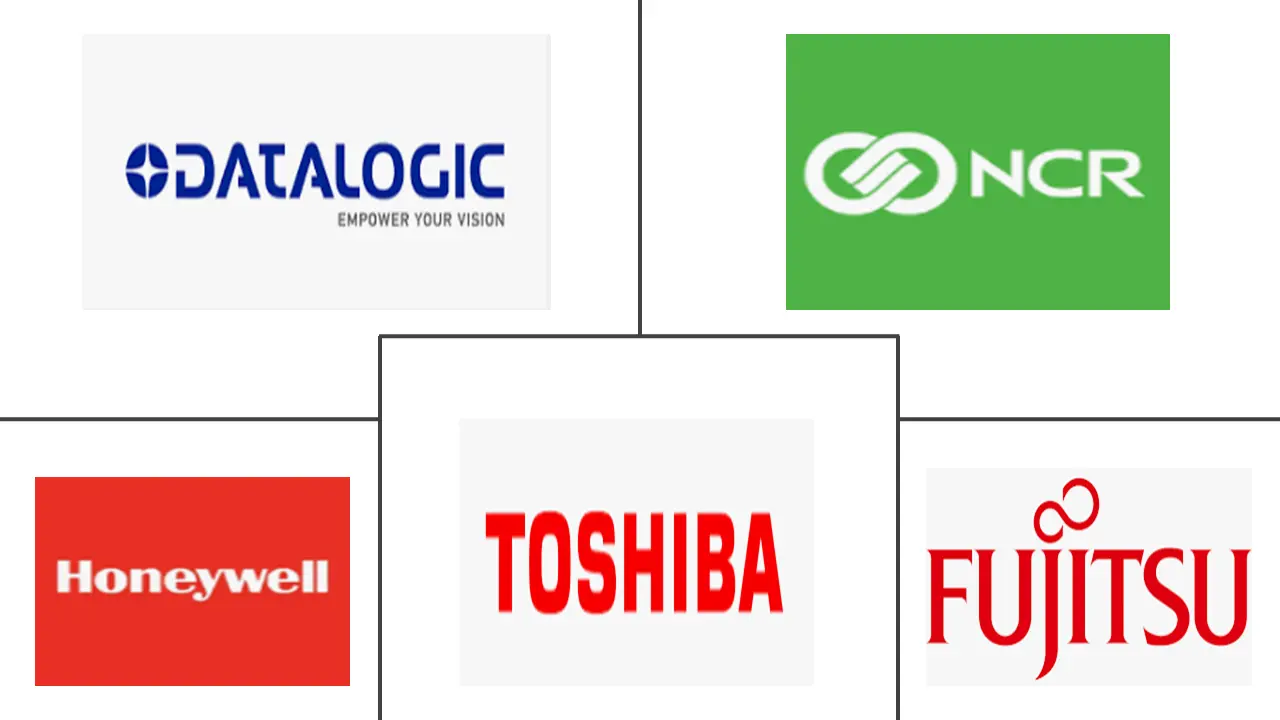Market Size of Asia Pacific Retail Automation Industry

| Study Period | 2019 - 2029 |
| Base Year For Estimation | 2023 |
| Forecast Data Period | 2024 - 2029 |
| Historical Data Period | 2019 - 2022 |
| CAGR | 12.50 % |
| Market Concentration | Medium |
Major Players
*Disclaimer: Major Players sorted in no particular order |
Need a report that reflects how COVID-19 has impacted this market and its growth?
APAC Retail Automation Market Analysis
Asia Pacific Retail Automation Market is expected to grow at a CAGR of 12.5% during the forecast period 2020-2026. One of the primary factors driving the growth of the retail automation market is the increase in demand for advanced automated systems in retail across the Asia Pacific. Because of the several benefits it provides, such as precision, low cost, high-quality performance, and speed, it has accelerated market expansion. Accounting and bookkeeping, inventory management, purchasing, analytics reporting, and other repetitive operations are automated with advanced systems.
- In developing countries across the Asia Pacific, the number of physical stores is gradually expanding. The majority of people choose to buy daily-basis items from stores since they are convenient. As a result, despite the expansion of e-commerce, some visitors still prefer to shop in physical stores. The retail industry's increasing technologies will have an impact on bringing more people into physical locations. The advantages of automated technologies have prompted businesses to incorporate them into physical storefronts. As a result, the retail automation market for in-stores is expected to develop in the future years.
- Automation has become more common in the retail sector as a result of technological improvements. The advantages of automated retail have raised awareness of the benefits of automation in retail operations, such as purchase/sales services, inventory optimization, inventory optimization, and others, all of which are projected to fuel market growth. For instance, automated guided vehicles are used in warehouses to conduct heavy-lifting duties because they can operate continuously and complete repetitive tasks with the same efficiency and accuracy. As a result, the rise of autonomous guided vehicles (AGV) and other technologies in the retail business has encouraged automation adoption in the Asia Pacific.
- The food and non-food segment are considered an essential industry vertical in the retail automation market. This is due to tremendous improvement in the food and beverage business, increasing the number of restaurants, cafeterias, and franchisees. Non-food services, on the other hand, are progressing as many retail suppliers seek solutions for logistics, in-store support, product inspections, and promotional planning, which is positively impacting the retail automation market.
- COVID-19 pushed retailers to invest in automation technology (such as automated inventory management, robotic picking, analytics reporting, and so on) to improve operational efficiency and lower labor expenses. For instance, when compared to manually picking things off store shelves, the application of deep learning and robots provides significant time and cost savings. Now that the COVID-19 pandemic has sparked a surge in demand for online shopping, supermarket stores want to protect their employees while meeting customers' continuous desire for quick delivery.
